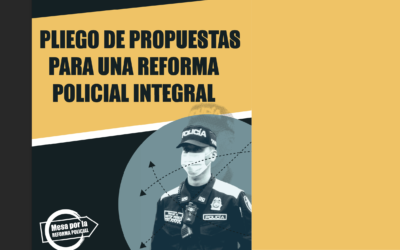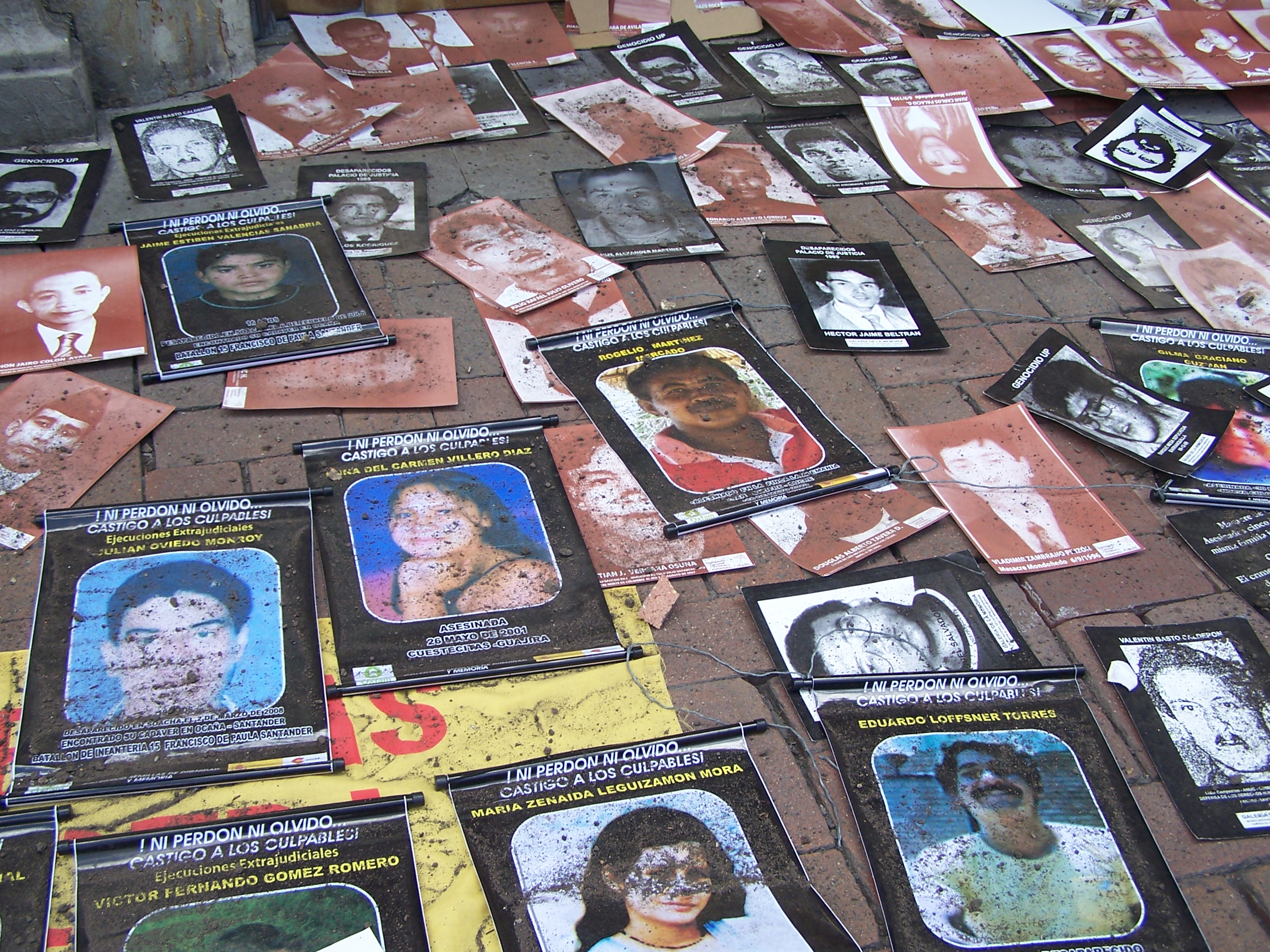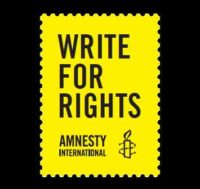Colectivo de Agogados José Alvear Restrepo – CCAJAR
Every day things are clearer. The initial government proposal for the “paramilitary demobilization” presented by then Minister of Interior, Fernando Londoño, did not contain any element of truth, justice, or reparation. In the end, the government was forced to eventually shelve this revolting proposal due to opposition expressed nationally and internationally. As a result, other legislative bills emerged to assemble a legal framework for these purposes.
One of these bills, presented by Senator Piedad Córdoba, recognized the State’s responsibility with respect to paramilitarism. Obviously, this project was not expected to prosper; nonetheless it left an historical record exposing the interest in presenting these criminal organizations as unconnected or unrelated to the State (despite the weight of historical reasons of which it has been accused). The strategy of covering-up -and covering up-as a mechanism of impunity- was successfully employed once again, since the Law of Justice and Peace [1] envisages nothing in that regard.
Later, meetings took place at the Casa de Nariño [2] to ensure a law to the liking of and tailored to the paramilitaries and Establishment. In the end, Congress passed the law presently known as the Law of Justice and Peace with support from a considerable number of congressmembers with ties to paramilitarism (more than 35% according to the very paramilitary leadership). This fact in and of itself delegitimizes this law. However, it was also harshly questioned for not guaranteeing the rights of the victims and society to know the truth, obtain justice, and have reparations made comprehensively. Furthermore, this legal framework was not expected to dismantle the paramilitary structures.
In fact, this law was conceived in order to: a) ensure impunity for the visible heads of paramilitarism; b) dress justice in pathetically low sentences; c) protect the assets acquired through violent dispossession, especially the approximately five million hectares of land expropriated >from the more than three million internally displaced peasants (since the land designated for the reparation fund will be a few “small farms”, which might never actually return to their true owners); d) bulletproof the narcoparamilitaries from the International Criminal Court (i.e. a dreaded extradition) and grant them the status of political combatants; e) and of course conceal the historical responsibility of the State and Establishment in the creation and consolidation of paramilitarism in Colombia (as well as their responsibility in the crimes against humanity committed by these groups). In other words, this law silently obviated the responsibility of the State and System and instead ensured an anonymous yet latent self-pardon.
Meanwhile, more than 30,000 paramilitaries automatically received amnesties; even though many of them had never really belonged to paramilitary organizations, went through any judicial process, or had to state the truth before any court. This method also left unpunished many crimes against humanity, impeded learning many truths on atrocious crimes, and as a result impeded justice and reparation. Moreover, these haphazard collective demobilizations (accompanied by blessings for impunity and hymns for pardon and forgetting) were undertaken even before the passage and application of the Law of Justice and Peace.
When the Constitutional Court ruled on said law, it set certain parameters and interpretative guidelines in an attempt at making it more presentable to the scrutinizing eyes of the national and international community. Nonetheless, decrees issued by the government -as well as resolutions and directives issued by the Office of the Attorney General- quickly surfaced to minimize or neutralize the scope of the Constitutional Court ruling, which clearly had a adverse affect on the victims’ real and effective participation in the criminal processes as well as on their rights to truth, justice, and reparation. These legal mechanisms had arisen to “wring the neck” of the Constitutional Court ruling, which in any case could not fix what had been created to make this impunity feasible.
Later, certain congressmembers (who had been placed in the legislature by paramilitary organizations) were detained, in addition to a number of senior government officials (such as Jorge Aurelio Noguera, former director of the Administrative Department of Security, the principal State intelligence agency, and former diplomat for the current administration), governors, mayors, among others. At the same time, testimony provided by paramilitaries began to implicate multinational enterprises, industry trade groups, ranchers, industrialists, members of the military, and politicians -including senior administration officials and even a cousin of the president- in the emergence or development of paramilitarism. In other words, paramilitaries laid out in the open what the “informed country” had already known for many years and what the Establishment attempted to conceal in countless ways (even resorting to systematic crimes).
This is precisely when the president of Colombia surprises the country with the reckless proposal for the prisoner release (which should shock the conscience of humanists), deceptively presenting it as a generous initiative for peace and truth. However, it is really just a shameless proposal for impunity. Moreover, even though the president claims the prisoner release law will have a general character, the country knows the real purpose is to get his congressional friends out of jail -as well as those who in the future run the same risk- for having supported the paramilitary project. (In other words, civilian or military public servants as well as representatives and owners of industry trade groups, economic groups, and national and transnational enterprises, among others.)
In this respect, the president may allow some repentant guerrilla members out of jail to show that the prisoner release also functions for persons who do not belong to paramilitary organizations. Nevertheless, this “gratuitous initial installment” will be nothing more than a smokescreen used to conceal the initiative’s true motives: favor those who contributed to the military, political, social and economic structure of paramilitarism (either as the State or through private enterprises). Just as with the Law of Justice and Peace, this prisoner release proposal is presented as a law applicable to all persons; nonetheless every one knows the proposal is meant to essentially favor a certain group (in these two cases, paramilitarism and its beneficiaries).
The president carefully presented the prisoner release proposal, warning that it would not be applicable for atrocious crimes or crimes against humanity. It can be deduced that this means the prisoner release will function for those indicated to be responsible for CONSPIRACY TO COMMIT A CRIME, which is the name given to the promotion of paramilitarism in the current criminal code of 2000. (In the criminal code of 1980, punishable conduct did indeed exist with the name of paramilitarism as such, plainly, simply, and without deceptive euphemisms.)
It should be kept in mind that those who created, encouraged, supported, and sponsored paramilitarism -through reprehensible complicity- should not only answer to the law and society for solely the conspiracy to commit a crime; they should also answer for CRIMES AGAINST HUMANITY. In other words, they should answer for the systematic and massive commission of crimes against humanity committed by paramilitary organizations throughout their history. Paramilitarism had and has had specific instigators and beneficiaries, whose criminal responsibility cannot be reduced to a mere “conspiracy to commit a crime.”
The commission of crimes against humanity has allowed imposing an economic model, which resulted in specific beneficiaries (i.e. the economic and political elite), as the civilian population became the principal target of paramilitary organizations. In particular, the victims included grass roots organizers, social and political leaders, unionists, human rights defenders, as well as whole communities. The paramilitary strategy created a climate of social fear in order to impose its exclusive model of capital accumulation, through the forcible displacement and dispossession of peasant, indigenous and Afro-Colombian communities, in addition to genocide, forced disappearances, massacres, homicides, and torture.
Those who committed to “refound the country” necessarily knew that said proposal was not achieved through benign methods, rather through the systematic and massive commission of atrocious crimes. Or will those who promoted or supported the organizations that were the material authors of these crimes not be held criminally responsible for these acts? In this regard, those who were committed to these organizations should answer for CRIMES AGAINST HUMANITY, and not for the terse “conspiracy to commit a crime.” (Punishing for crimes less severe than those truly committed is another contemptible, covert and sophisticated mechanism of impunity.)
Without a doubt, those who belonged and were committed to the paramilitary project are more criminal responsibility than those who materially carried out the atrocities (and are even guiltier than those who acted as the visible heads of these crime mobs). It has been said it is unfair the paramilitary chiefs pay such light sentences, while the State agents that supported them pay much longer sentences. In all respects, this reasoning is mistaken, since the State sponsorship of these groups -as well as the sponsorship by the economic elite- is much more severe and reprehensible than the action of those who overtly appeared as the paramilitary goons. When all is said and done, the paramilitary chiefs are only the hand executing the policies defined and encouraged by these terrifying means to “socially control” and violently impose economic, social, cultural and political models not specifically meant to strengthen democracy and the social state under the rule of law.
As a result, those who committed to paramilitarism are not less responsible than those who merely executed these policies drawn up behind closed doors. These persons are also the authors of atrocious crimes as well as responsible for crimes against humanity. Therefore, they should also be criminally prosecuted for crimes against humanity and not be covered by the president’s proposal for the prisoner release or future amnesties or pardons (be they overt or covert).
Unfortunately, paramilitarism has not been a phenomenon unrelated to the State; documented history shows us the State has provided paramilitarism with legal support and has encouraged and consolidated it. (This has even been demonstrated in army manuals.) In any case, now is not the time to negate the undeniable and supra-evident; you cannot block the sun with your finger. It should be openly recognized that paramilitarism constitutes a strategy by the State and Establishment to ensure its economic and political objectives. Without a doubt, paramilitarism has been the most representative expression of State-sponsored terrorism adversely affecting Colombian society. (While the profits to these crimes crown the heads of a select group of benefited plutocrats.) It must be repeated that those most responsible for the criminal record of the paramilitary organizations are not found at the prison in Itaguí; they are only the instruments, the visible heads of this macabre strategy.
In fact, Mancuso made sure he put his finger in the wound, when he provided testimony to the Justice and Peace Prosecutorial Unit and recognized that what really existed was State paramilitarism (and presenting himself as irrefutable evidence of this phenomenon).
In this respect, the Supreme Court of Justice and other Colombian tribunals should go beyond the concept of CONSPIRACY TO COMMIT A CRIME and begin to handle the classification of CRIMES AGAINST HUMANITY, as has occurred in other parts of the world in similar situations. This entails the investigation and trial of the responsible parties under these conceptual parameters, if it is wished to keep international tribunals >from concerning themselves with this task, given the laxity or slowness these criminals are or may be dealt with by the Colombian State. (Be it due to apparent trials being carried out or simply because it was attempted to remove the responsible parties from the action of the international tribunals.)
Returning to the issue of the “prisoner release”, will the law that eventually provides the legal support -if a law is indeed employed- be voted on without the congressmembers implicated with paramilitarism removing themselves as well as those that have replaced them in their seats? Will the government resort to a decree, thus usurping the legislative function pertaining to the parliament in these matters? Or will the president appeal to the concept of “internal unrest” in a clear abuse of the states of emergency?
Due to the foregoing reasons, the president’s loathsome proposal for the prisoner release must be completely rejected due to the fact it constitutes a monumental offense to the victims as well as society. This becomes even truer when attempts are made to favor public servants, who should be punished with even greater severity and not be treated with a shameless leniency. (The implicated authorities did not have the constitutional function of violating human rights, rather of guaranteeing them; it was not their function to support the crime, rather combat it.) The proposal by the Casa de Nariño is disproportionate, unreasonable, and goes against all principle of justice. This doomed initiative is a prize for those persons who -from within the State and private enterprises- supported and benefited from the crimes committed by the paramilitaries. Undoubtedly, this proposal encourages crime rather than guarantees its non-repetition, in spite of the massive -and even astute- effort employed by the government to make presentable what is really unpresentable. The president of the Supreme Court of Justice has even publicly questioned this measure of impunity. Will the national and international community also reject this proposal? The passive and alienated national opinion cannot reach the disgraceful extremes of applauding such offensive proposals shamelessly launched before the theater of impunity. Tomorrow will dawn and we shall see.
…………..
1. Translator’s Note: Law 975 of 2005, also known as the Law of Justice and Peace, is the legal framework applied to the paramilitary members accused of crimes against humanity and war crimes, principally the leaders and middle commanders, which is about 7% of all demobilized persons.
2. Translator’s Note: the presidential palace in Colombia.



